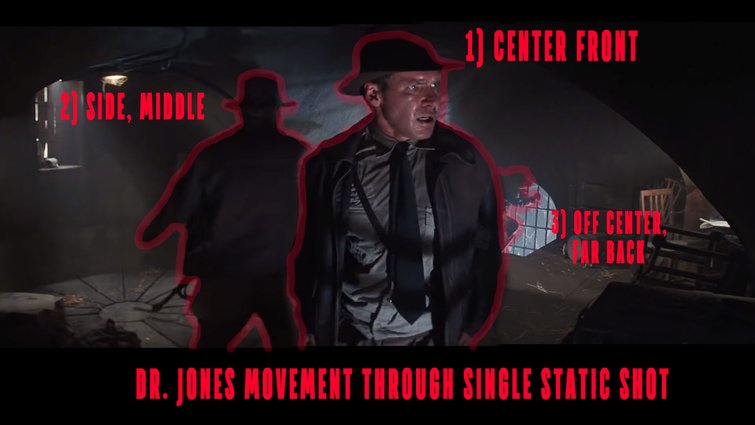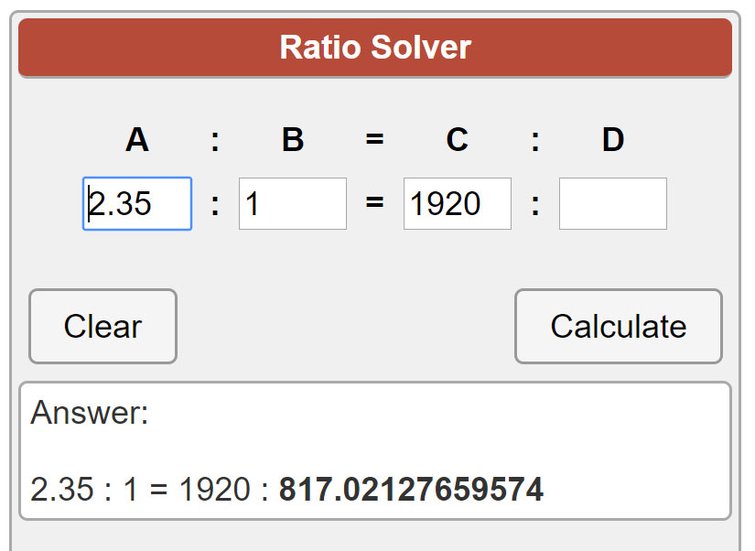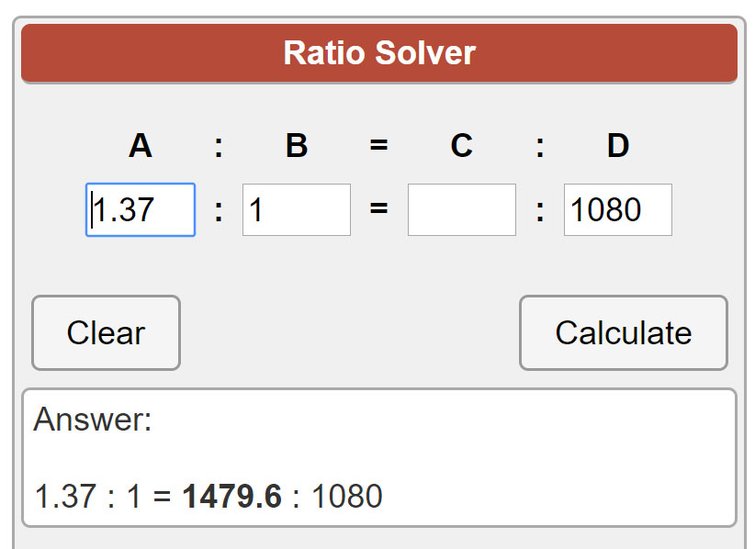
Choosing Aspect Ratio: A Guide to Everything You Need to Know
Aspect ratio has a long and storied history. So, what does that mean for the modern filmmaker and video editor?
Here’s perhaps the understatement of the century: There’s a lot that goes into making a movie, even the bad ones. Specifically, there are a lot of decisions. And those decisions have to have follow-through. When all of those decisions work together and follow-through is thorough—that’s when image and sound combine seamlessly to bring a story to life in the most engaging way possible.
We’ve covered these decisions in depth, from pre-production to post-production. What’s the right choice when it comes to storyboarding, audio recording and mixing, lighting, screenwriting, motion graphics, and editing? Which microphone is best for which environment? Which camera with which gimbal?
And then there’s choosing the right aspect ratio.
Choosing an aspect ratio used to be easier. It was determined by film stocks, lenses, and how the image was projected onto the film stock. These days, we can manipulate images in seemingly infinite ways, and that means another decision: How will you present your image?
Here’s everything you need to know about picking the aspect ratio that’s best for your project.
What Is Aspect Ratio?
To put it plainly, it’s the shape of your image—the width and the height. An image’s aspect ratio represents the image’s size with two numbers separated by a colon. So, an image with an aspect ratio of 1.85:1 means the image’s width is 1.85 times the size of its height.
Let’s look at which aspect ratios are popular for which medium, and check out how you can get these ratios.
A Brief Overview of the Aspect Ratio
For decades, the standard aspect ratio was 1.37:1, or the Academy Ratio. It wasn’t until big production houses had to compete with the commercialization of television sets that they began experimenting with new, exciting aspect ratios to give the audiences something they couldn’t get at home—wider, larger screens that immersed the audience deeper into the film.

Eventually, theater aspect ratios settled between 2.35 and 1.85. Today’s standard 16:9 came about as a compromise between theater aspect ratios and television’s 4:3 format.
The 16:9 aspect ratio allowed for the comfortable viewing of both older television programs and blockbuster films, without having to crop and “pan and scan” either format to fit well on the screen.
Aspect Ratio Establishes Mood and Setting
Certain aspect ratios have become so synonymous with cinema, television, home video, etc., that even the lay person, without a full understanding or knowledge of aspect ratios, can recognize the historical significance of each.
The classic Academy Ratio can create an “old-timey” feel, whereas the super-wide anamorphic screen creates the sense of blockbusters and epic fantasy or adventure films. Yes, certain color grading techniques can emphasize these moods, but it starts with the ratio.
Filmmakers can use this to their advantage when they wish to immerse the audience in a certain period or make the mood more dramatic. If you’re want to watch one film that will teach you everything you need to know about camera movement and compositional choices in relation to aspect ratios, look no further than Wes Anderson‘s The Grand Budapest Hotel. As the film travels through history, the aspect ratio changes to match common ratios at that time.
To grasp how a super-wide aspect ratio can create mood and scope, look no further than Peter Jackson’s truly epic and awe-inspiring The Lord of the Rings adaptations. The compositions within the trilogy speak for themselves, showing a jaw-dropping world with grand vistas and landscapes. This story lends itself to a wider presentation. (Think older epics like Lawrence of Arabia and The Bridge on the River Kwai.)
Let’s talk about why composition matters so much when choosing the aspect ratio.
Aspect Ratio Determines Composition
At the end of the day, regardless of the historical or cultural significance of various aspect ratios, the ratio will determine how the filmmaker composes each and every shot in their film. Expanding or minimizing the field of view will invariably affect one of the first rules of composition: The Rule of Thirds.
The Rule of Thirds helps the filmmaker create visually compelling images that draw the audience’s attention into the whole image, as opposed to just focusing on something in the center. The intersecting lines create reference points for where to place the subjects to create a dynamic, interesting composition.
The more confined the ratio is, the tighter the compositions will be, creating a narrower sense of space. Often, things can start to feel hyper-focused and compressed. This isn’t inherently a flaw. It’s just a result of the tighter ratio, which (again), Wes Anderson uses masterfully in The Grand Budapest Hotel.
However, you can still achieve depth and dynamic composition, as we see in Casablanca.
Despite the tighter ratio, we’re still seeing the Rule of Thirds in action to create strong angles, and we never become overwhelmed by the wide-open space of the airfield. The camera’s movement helps create a sense of depth but, ultimately, there’s a limit to how many characters and subjects we can layer into a single frame.

We can’t create a long expanse or a panoramic view. But, as we expand our ratio, we can increase that sense of depth and scale. Take note of how Steven Spielberg uses the entire expanse of the screen to create a layered, dynamic composition in Indiana Jones and the Last Crusade.
The wider aspect ratio allows Spielberg and DP Douglas Slocombe to carefully and aesthetically layer in an abundance of subjects and information without overwhelming the audience or crowding any single frame. Each aspect ratio calls for a story-specific composition that allows the actors to move and perform in a frame that enhances the story in the best possible way. While that sounds like a super-obvious statement, good shots come down to there being a mutual creative understanding from the DP and Director.
Just remember, choosing a wider aspect ratio doesn’t just allow for wider, deeper compositions, it also poses the challenge of revealing more of the filming location. If you don’t have locations or sets worth showing, or the ability to light much wider shots without revealing the tools of the trade, then you risk creating shots that are visually uninteresting (if you’re not a master of working with negative space).
Primary Aspect Ratios
Let’s dive a little deeper into three aspect ratios and look at more examples of how they affect the image and compel the subjects’ movement.
The Academy Ratio, 1.33:1, and 4:3
4:3 (1.33:1) or 1.37:1 (“the academy” ratio) has been making a significant comeback over the last decade. It’s not just happening in art-house films—the Snyder Cut was presented in 4:3 on HBO Max earlier this year.
When asked at Justice Con why he chose to go with 4:3 for the final presentation, Snyder said this:
My intent was to have the movie, the entire film, play in a gigantic 4:3 aspect ratio on a giant IMAX screen. Superheroes tend to be, as figures, they tend to be less horizontal. Maybe Superman when he’s flying, but when he’s standing, he’s more of a vertical.
Everything is composed and shot that way, and a lot of the restoration is sort of trying to put that back. Put these big squares back . . . it’s a completely different aesthetic. It’s just got a different quality and one that is unusual. No one’s doing that.
2.35:1
Remember earlier when we talked about the wide, jaw-dropping landscapes of The Lord of the Rings? That’s 2.35:1. The pairing of wider lenses with the wide aspect ratio reveals the environment to your audience, figuratively immersing them. Additionally, this on-screen elbow room gives subjects more freedom within the frame, and movement and action can be captured in a single, relatively static shot. The camera doesn’t have to whip around to take in order to take everything in. It’s extremely liberating.
I like using wide-angle lenses—35mm and below—preferably the 24mm focal length. Wide-angle lenses will help reveal more of the background, creating a deeper sense of space and environment in the image. I find this helps to create sharper, more dynamic angles in the composition between the subject and the setting. These angles compel the viewer’s eye-line, whether it’s across the frame or drawn toward the center.
My biggest influence in this regard is, no doubt, Steven Spielberg and Douglas Slocombe’s work on The Last Crusade. The wider focal lengths in most of the scenes create this marvelous sense of depth—an almost 3D-like quality. Combine this with the wider aspect ratio of 2.35:1 and your subjects can travel deep into and all around the frame in a single shot. (Definitely rewatch the Last Crusade clip earlier in the article.)
The 2.35’s ability to seamlessly marry wide coverage of the action with strong dynamic angles is why I believe it’s the go-to for action and epic films.

16:9
As previously mentioned, 16:9 was born as a compromise between the Academy Ratio and 2.35 so that both could play comfortably on the same screen. Naturally, newer television series and broadcasts would want to take advantage of all this space. This aspect ratio has become the standard in today’s digital media. The ratio isn’t nearly as confined as the Academy Ratio—and not nearly as extreme and dramatic as 2.35. It offers a pleasant balance. Because of this, we get a lot of commercial films and comedies in 16:9.
Social Video Aspect Ratio
When thinking about social media videos, think about aspect ratio in terms of landscape or portrait mode. The landscape ratio you might need can be any of the above-mentioned ratios, but most likely you’re going to need a ratio of 16:9—and then vise versa (9:16) for vertical/portrait orientation presentation.
This is exactly what it sounds like, a vertical-oriented video meant to be viewed on Instagram feed, Instagram Reels, TikTok, Facebook, etc. In the video above, Mike Maher from Film Bodega goes over how you can edit and change horizontal footage into vertical video to fit social cuts and client needs.
Here’s how to approach each platform:
Achieving Different Aspect Ratios in Post
Traditionally, filmmakers shoot 2.35 films with anamorphic lenses, which actually brings in more light horizontally captured on the full 35mm frame. Later, it gets condensed down to its proper proportions. This allows each frame to capture more information. However, if you’re simply shooting on a DSLR and don’t have access to anamorphic lenses, you can still achieve this framing.
So, how do you change your aspect ratio? Do you shoot your footage a specific way? Or, are these decisions made in post-production? The complicated answer is yes—to both. It’s important to keep in mind how your video will be presented when shooting so you can record in these specific ways in some circumstances. Or, you set your composition and framing accordingly, allowing more headroom, less headroom, center framing, etc.
Often, camera monitors and external monitors will allow you to see an overlay with a specific aspect ratio that gives you an idea of what your framing will look like. You can even see what a vertical ratio will look like. While this isn’t the traditional way to pick and choose your aspect ratio, it’s a common practice for modern filmmakers when framing up a shot or choosing lenses.
If you’re looking to learn how you actually change your video’s aspect ratio, here are a few tutorials for approaching this workflow in the most popular NLEs:
- Changing Your Aspect Ratio in Premiere Pro
- Changing Your Aspect Ratio in DaVinci Resolve
- Changing Your Aspect Ratio in Final Cut Pro X
To change your sequence settings, you’ll want to use a ratio calculator. How does it work?
To get a wider aspect ratio (like 2.35), simply put the width of the shot footage into field C.

But, if you’re changing for a narrower aspect ratio—like the Academy Ratio—you’ll need to use the height of your footage (since you can’t expand the height of the shot).

Choosing Your Aspect Ratio
Choosing your aspect ratio is a key element in determining your film’s composition and mood. Can you compose and light wider shots? Do you want to focus the audience’s attention on certain details? Do you want to immerse them in the film’s lavish or fantastical environments? Or, do you want to confine their field of view to avoid emptier, flatter settings?
Choose your aspect ratio before shooting. Changing it in post—even from 16:9 to 2.35:1—can mess up the composition. Compose various shots in different ratios ahead of time, before sticking to one during production. See what locations are available. Figure out ways to stretch your budget so you can create or dress the sets. But, above all, see which composition styles best help to tell your story.
This post was originally published in June 2019. It has been updated to share additional information.
Need a bit more on working with vertical video? Check it out!
- A Master Class in Framing Shots for Vertical Cinema
- The Best Gear for Creating Your Next TikTok Video
- 5 Tools to Mount Your Camera Vertically
- The Top 3 Ways to Shoot Vertical Video of Your Film Project
- How to Upload Your Videos to Instagram from PC and Mobile
Cover Image via Warner Bros.




